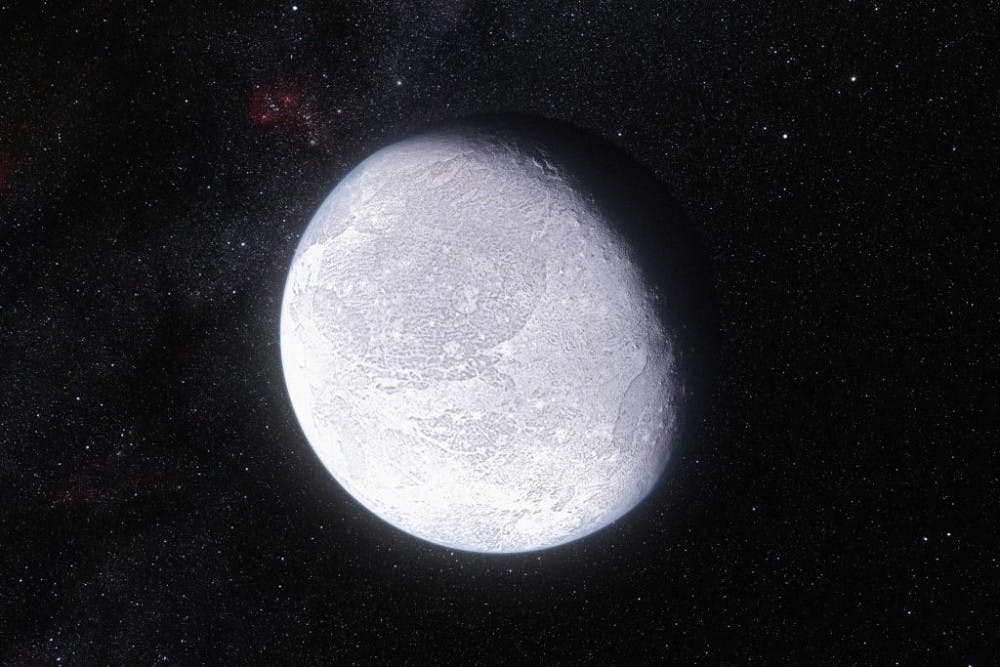Ever since the International Astronomical Union (IAU) demoted Pluto from a planet to a dwarf planet in 2006, people have begun to pay significantly more attention and draw more definitive lines to the concept of a “dwarf planet.”
Recently, scientists have discovered the newest member of the dwarf planets in our solar system: a planetary mass in the region near Pluto that has been labeled 2014 UZ224.
In essence, the key difference between a planet and a dwarf planet is that a dwarf planet has not yet cleared the area around its orbit, while a planet has. However, just like planets, dwarf planets generally orbit the sun and have enough gravitation to sustain a round appearance.
Since the time that Pluto was categorized as a dwarf planet a decade ago, a lot more previously obscured planetary objects have been sorted into the same family. For example, the last member that has earned the title of a dwarf planet is Ceres, which lies in the asteroid belt that lies between Mars and Jupiter.
Other Kuiper Belt objects currently classified as dwarf planets include Haumea (discovered in 2004), Makemake (discovered in 2005) and Eris (discovered in 2005).
Not much is known about 2014 UZ224 at this point, but scientists know that it is located about 8.5 billion miles from the sun and it takes approximately 1,100 Earth years just to make one orbit. The dwarf planet itself is about 530 km in diameter, although no detailed image of its physical appearance has been captured. The difficulty in precisely determining the characteristics of the dwarf planet lies in the fact that it is so far away from the sun that essentially no light can reflect on it.
David Gerdes, a professor of astronomy at the University of Michigan, revealed that astronomers discovered the new dwarf planet using a space instrument called the Dark Energy Camera (DECam).
The University’s very own Bloomberg Distinguished Professor Adam Riess, a Nobel prize winner, was one of the three scientists to first discover the concept of dark energy, which could explain why our universe is expanding at an accelerating rate.
Although the name might sound intimidating, a Dark Energy Camera is simply a device built to capture pictures of galaxies and supernovas as they move across the vast expanse of space. A major usage of DECams is that they can create maps of distant galaxies that are further used to study dark energy.
“Objects in the solar system, when you observe them at one instant and then a little while later, they appear to be in a different place in the sky,” Gerdes said in an interview with NPR.
The discovery of 2014 UZ224 is groundbreaking for the astronomical community, because this might provide a clue that can lead astronomers to find out more about what they are ultimately searching for, the possibility of a ninth planet that exists beyond Pluto.
For years now, scientists have been doing research and running computer simulations pertaining to this enigmatic planet. Planet Nine, if it does exist, is predicted to be 10 times more massive than Earth.
“I’m excited about our chances of finding it,” Gerdes said according to NPR.
Currently, Gerdes and his team at University of Michigan are actively reading the galaxy maps produced by the DECam in the hope of spotting Planet Nine lurking somewhere on that map.
Although progress has been fruitless so far, the researchers are determined. If Planet Nine is truly out there, it won’t be long before scientists can uncover more about its mysterious existence.
Correction: This article originally stated that the dwarf planet Ceres lied in the Kuiper Belt that lies beyond Neptune. Ceres is actually found in the asteroid belt between Mars and Jupiter.





